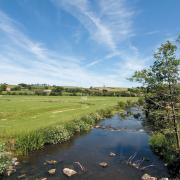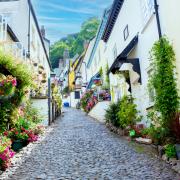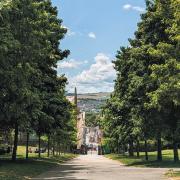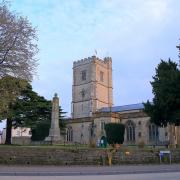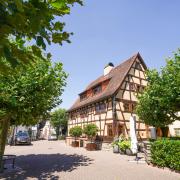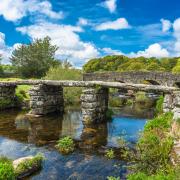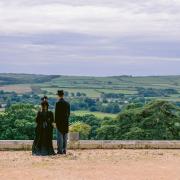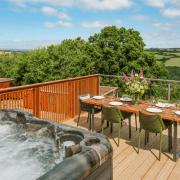This summer, visit some of these amazing English Heritage locations and learn a bit more about the wonderful history of Devon
Most of us will need to stay closer to home this summer but there are lots of opportunities for sight-seeing and wonder right on your doorstep you may not have known about. English Heritage looks after over 400 buildings, monuments, and locations of interest across the country. It can be hard to pick where to visit, so we've put together a handy guide to Devon heritage sites that you can visit for free.
Lydford Castle and Saxon Town
At the edge of Dartmoor lies an amazing piece of history that is the perfect spot for a picnic. The 13th century remains of Lydford Castle are part of a much larger history going back to the Saxon period. Unusual mounds across the village indicate this was defended territory and may have helped repel a Viking attack in 997. Later, William the Conqueror had a wooden castle built and finally King John erected the structure you can still see today.
Throughout the Middle Ages and until the 18th century, the castle was used as a prison against anyone who broke stannary law - the rules that governed tin mines in Cornwall and Devon. Famously, Plymouth MP and tin miner, Richard Strode was incarcerated there for complaining that debris from the mines was flowing through the moorland rivers and silting up Plymouth Harbour. He described his time at Lydford as "one of the most annoious, contagious and detestable places wythin this realme". Nowadays, it a much more welcome place to visit and has plenty of walking possibilities and grassy areas for picnics and children to play. There is also a National Trust site just next door which is home to the deepest gorge in the South West. Learn more here.

When you're finished exploring Lydford, less than seven miles away you can visit a much older site of Merrivale. This is a prehistoric wonder and one of the best monuments on Dartmoor. Built somewhere between 2500BC and 1000BC, the site contains the remains of two roundhouses, several rows and circles of stones, and a number of cairns. All the signs indicate this was a place of great ritual importance and may have been used by different groups over the centuries. You can learn more about what to look out for on your visit here.
Why not finish off the day with a walk at Upper Plym Valley, an incredible area of beauty and Bronze Age settlements. This whole barren landscape would have once been dotted with hundreds of small communities of farmers. Later, the medieval era would have seen rabbit farming and tin streaming take the place of agriculture as the weather made the landscape harder to toil.
Alternatively, if you don't mind paying for tickets, Okehampton Castle is not far from Lydford and has plenty of things to do on your visit. Why not take a free audio tour and learn more about the largest castle in Devon's history. The ruins are set within extensive grounds that encompass three fields, woodland and a river. Leaflets with walking routes are available at the entrance and this another great spot for a picnic. Spring and early summer offer some amazing wildflowers and there are plenty of birds and other creatures to keep an eye out for whilst you're there.
Booking is essential and more information can be found here.

Grimspound to Hound Tor
You can walk between our next two free English Heritage Sites, both of which lie on Dartmoor. Parking up at Grimspound, you will be able to see the remains of 24 stone round houses and a huge wall that would have been the boundary of the settlement. There's no place quite like Dartmoor's barren yet beautiful rolling hills. You can climb up to Hookney Tor to get the best view of the site and an idea of what life would have been like back then.

Once you're ready to begin your walk proper, follow the paths south-east, passing Jay's Grave and walking briefly on a small country road to our next stop: Hound Tor. The walk is a little over three miles and should be relatively easy going for walkers. Hound Tor is a deserted medieval village that dates back to around the 13th century. You can still see the remains of the long house walls and get a great view from the Greator Rocks just past the site. This is fantastic and free route to take on a summer's day where you're unlikely to meet many other people and can truly lose yourself in nature.
Bayard's Cove Fort
We're heading to the coast for our next English Heritage Site of Bayard's Cove Fort, which is situated just inside the mouth of the River Dart. This incredible Tudor fort was built by the locals to protect them from from invasion. In its day, it would have had some pretty heavy fire power and the cannon windows can still be seen today. The fort was ready to defend against any ships that made it part Dartmouth Castle just down the river. You can learn more about it's history here.

Just down the road, you can explore the 600 year old Dartmouth Castle. There is a ticket price to enter this site which will open again on May 17th, but there are lots of fun things to do in and around the castle that make it worth the price. You can even take the river boat from the town quay up to the castle to truly get a feel for the location. You must book ahead for this visit and can also learn more about what's on here.
Blackbury Camp
Our final stop on our Devonshire free Heritage Site Tour is a hill fort that saw a lot of use and now is a perfect walking spot. Built around 400BC, this large site would have been the home of a Iron Age tribe for possibly several hundred years. In its time, it would have been very impressive to behold and the last remnants of its history can still be seen today. A woodland has grown around the site since the time when people would have called it home and it sports some truly beautiful wildlife. Going in spring allows you to see the blankets of bluebells that grow annually.

Once you've finished exploring Blackbury Camp, why not hop over the county line and visit Abbotsbury less than an hour away for more fascinating history. You can read more about what is available there, and across neighbouring Dorset here.







